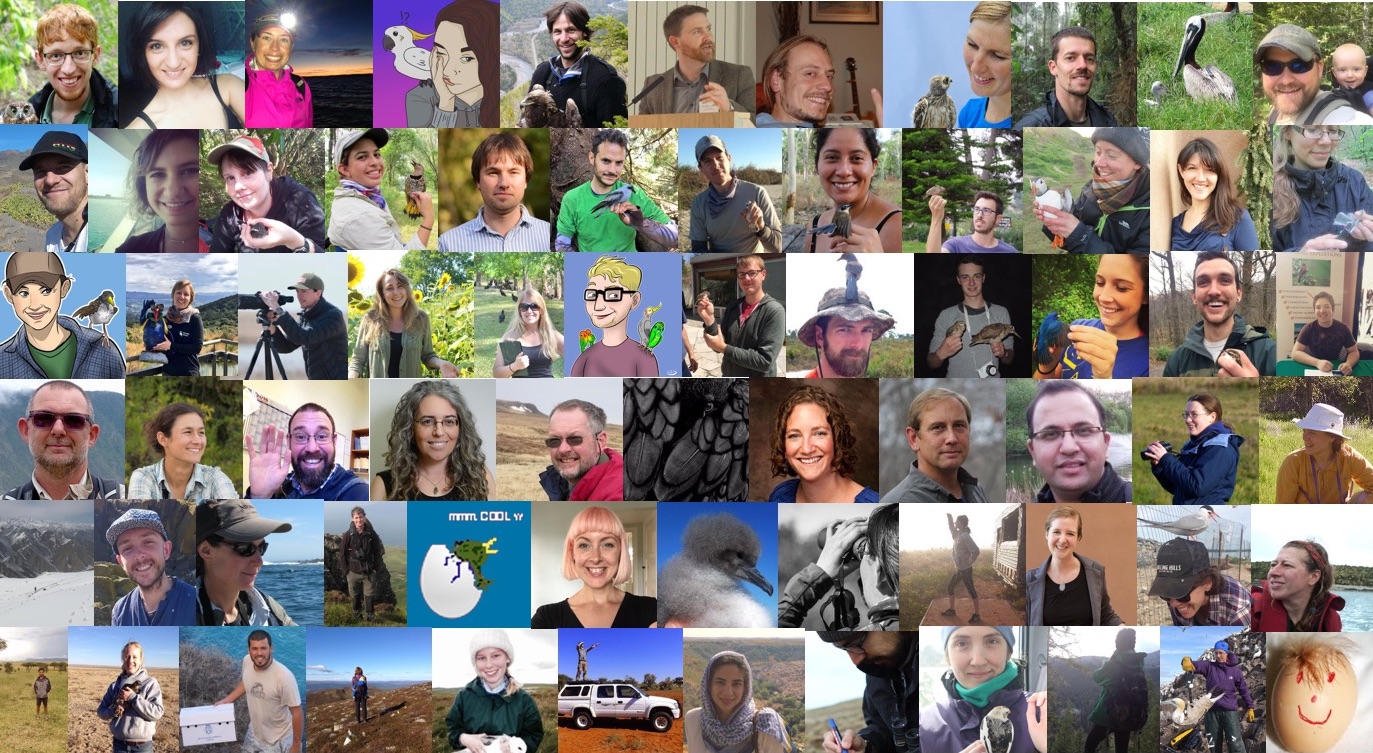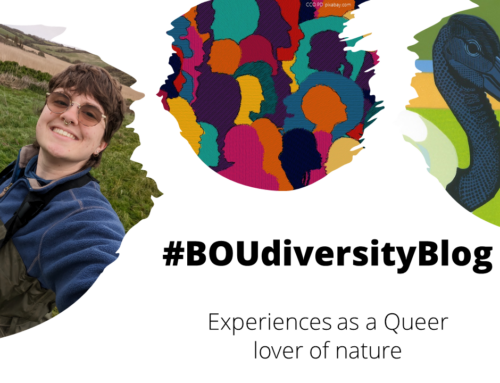The BOU is committed to diversity in ornithology. We aim to help overcome barriers preventing equality for ornithologists and all our activities are open to anyone interested in ornithology regardless of, but not limited to, nationality, gender, ethnicity, disability, sexuality and socio-economic status.
Well, that’s what it says on the tin, but what does it really mean? The BOU is actively developing ideas on how to deliver on this important commitment and has established a working group to develop a plan of action, and we have been making changes for some time. Understanding barriers is critical and this is where we need to do more work, especially in the context of what the BOU can change. The baseline data we hold about members and participants in BOU activities is limiting and we need to consider what kind of information we should and should not be asking for in future to help us understand barriers and support good Equality and Diversity (E&D) policy; the working group will consider this. However, the data we do have has helped us tackle gender inequality more rapidly than other issues.

An interesting paper by Caren Cooper and Jennifer Smith provides some insight into gender differences in participation in bird-related activities, but not specifically ornithology. Recent work by Kim Sullivan (Utah State University) provides some interesting statistics from American ornithological societies, for example: female membership of societies did not increase at the same rate as increase in female students; female ‘survival’ as a member of a society decreases more rapidly than for males (between 1999 and 2006 only 27% of women remained members compared with 46% of men). Kim’s research on gender differences in the ornithological job market shows fascinating differences in how men and women progress, and unsurprisingly fewer women remain as professional ornithologists over time than men. In a recent BTO News opinion piece, Alison Johnston cites some of the reasons why this might happen, including how unconscious bias creates higher thresholds or standards for women to overcome. The International Journal of Gender, Science & Technology has a range of papers on women in STEM, but nothing specifically on ornithology, and other journals no doubt include gender research. A more in-depth assessment of the research on gender differences in similar science disciplines could improve our understanding of why these patterns exist in ornithology and might help the BOU to promote change across the community.
Gender balance in the BOU’s governance groups has changed through a proactive approach to inviting more female contributors to the BOU management family, but is still not sufficiently representative. Of the 14 members of the BOU Council only four are female. The BOU also has five standing Committees: Engagement (4 of 7 members are female); IBIS Management (4/12); Grants (2/6); Meetings (3/8); and Records (1/9). We will continue to implement E&D in selecting members of our governance groups as and when we need to replace them, but how about helping us change this?
Another consideration is how we achieve gender balance in our events, especially our conferences. I’m on the organising committee for #BOU2018
(21st century ornithology: challenges, opportunities and decisions) and we were challenged by an accepted author over the small number of female presenters in the final programme. We received 43 oral paper submissions – my initial thought was that the programme themes would not have led to gender discrimination as they represented broad ornithological disciplines. Selection of papers for BOU conferences is always based on scientific excellence and fit to the conference theme; the evaluation panel for this conference comprised two women and two men. Just eight of the submissions had female presenters, of which two did not fit the themes of the conference. Overall authorship was 124 men: 48 women (2.6:1). We accepted 26 papers, four from female presenters, and overall authorship will be 87 male: 33 female (2.6:1).
This ratio struck us as odd and so we had a look at recent BOU conferences; the gender ratio for #BOU2018 does not match previous ones (see below) and so the conference themes clearly did contribute to imbalance, although it is hard to understand why.
Gender balance in oral paper presenters at recent BOU conferences
Then along came the first BOU Twitter conference (#BOU17TC) last November, which was mainly open invitation for papers, and global. We received 65 submissions and the (gender balanced) selection panel chose 61, of which 36 were from female first authors and 25 male (the 4 rejected papers were from three men and one woman). #BOU17TC is probably a much better representation of the ornithological community, although might be biased towards ECR, and as a forum is perhaps considerably more accessible to all.
Some recent research showed that men and women behaved differently at attended conferences, with men more likely to ask questions, etc; both gender bias of those selecting questioners and women feeling intimidated were part of the complex reasons why. Twitter conferences perhaps reduce these, and other barriers, to some degree. Another barrier to physical attendance at conferences might be that women still typically invest more time in care roles (for both children and adults) than men; Twitter conferences and other virtual means of sharing research are likely to be more accessible to all.
We will do more assessment of E&D in BOU membership, governance and events, and through our working group will identify new actions to reduce and hopefully completely remove barriers. Through our actions we will also seek to help others understand how to overcome aspects of E&D in the hope that those barriers that are beyond our own ability to change are broken down.
We are a small society with big reach and rely very much on voluntary involvement of members, and participants; if you have ideas on addressing E&D that you think BOU can put into practice then please get in touch, and if you are an ornithologist who could add to our diversity then please consider getting involved.
Featured image: Twitter profile avatars of presenters taking part in #BOU17TC.





